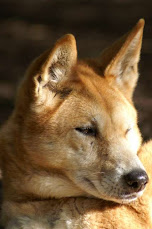
Humans are constantly making decisions with uncertain outcomes—betting on a poker hand, predicting the weather, and selecting a lane of traffic, for example. Because the consequences of such decisions are not guaranteed, we must base our decisions on clues from the environment, determining the probabilities of potential outcomes before deciding on a rational course of action.
How does the brain perform these calculations? During the formation of a decision, what happens between sensation (our interpretation of the outside world) and behavior (the manifestation of our decision)?
To answer these questions, Tianming Yang and Michael Shadlen from the University of Washington trained Rhesus Monkeys to perform "simple" statistical calculations, and measured the activity of particular neurons during the decision-making process. The results were published on June 3 in an advance online publication in Nature.
In the task, the monkeys were presented with a random series of four abstract shapes on a video screen. They then directed their gaze toward either a red or a green target light, only one of which would be associated with a juice reward. The light that would give the reward was not fixed, but could be calculated probabilistically.
Each shape (there were a total of 10) represented the probability that the rewarding target was either red or green. For example, a square strongly favors the red target as rewarding (weighted 0.9), while a triangle indicates that green will be rewarding (0.9 in the opposite direction). A cone weakly indicates the red will be rewarding (0.5 towards red), and a pac-man weakly indicates green (0.3). Thus, the probability that the monkey will be rewarded by looking at a particular target is the sum of the probabilities for each of the shapes.
With 10 shapes, there are 715 unique combinations (and 10^4 permutations), thus precluding memorization of specific four-shape patterns, and encouraging the monkeys to learn the shapes and calculate the reward probability of each target. This is a far from trivial demand of a monkey, but eventually (after two months and over 130,000 trials), they chose the correct target 75% of the time, indicating that they had learned to base their decisions on the combined probabilities for reward. This capacity of monkeys to make such subtle probabilistic deductions is quite impressive, but is only the first half of the story.
After thus establishing a complex reasoning task, the researchers could begin exploring the neural basis for these types of decisions. They measured the activity of neurons in a particular area of the brain, called the lateral intraparietal area (LIP). This area lies intermediate between the visual input (the abstract shapes) and the behavioral output (the appropriate eye movement), and is thought to carry information involved in transforming visual signals into commands to move the eyes; i.e. in making decisions that result in eye movements.
What they found was awesome. When the monkeys saw a shape, the activity of their LIP neurons was proportional to the probability associated with that shape. With each sequential shape, the neurons altered their firing rates to match the updated probability. Although it is unknown how their brains converted information from each shape to their respective probabilities, the activity of these neurons indicates that they either play a role in the transformation, or represent the outcome during the decision-making process.
Apart from showing that monkeys are closer to furry calculators than previously thought, the study has grander implications. As the authors conclude, “the present study exposes the brain’s capacity to extract probabilistic information from a set of symbols and to combine this information over time.” A similar neural process may underlie our abilities to reason about alternatives, and make decisions based on subtle probabilistic differences.



